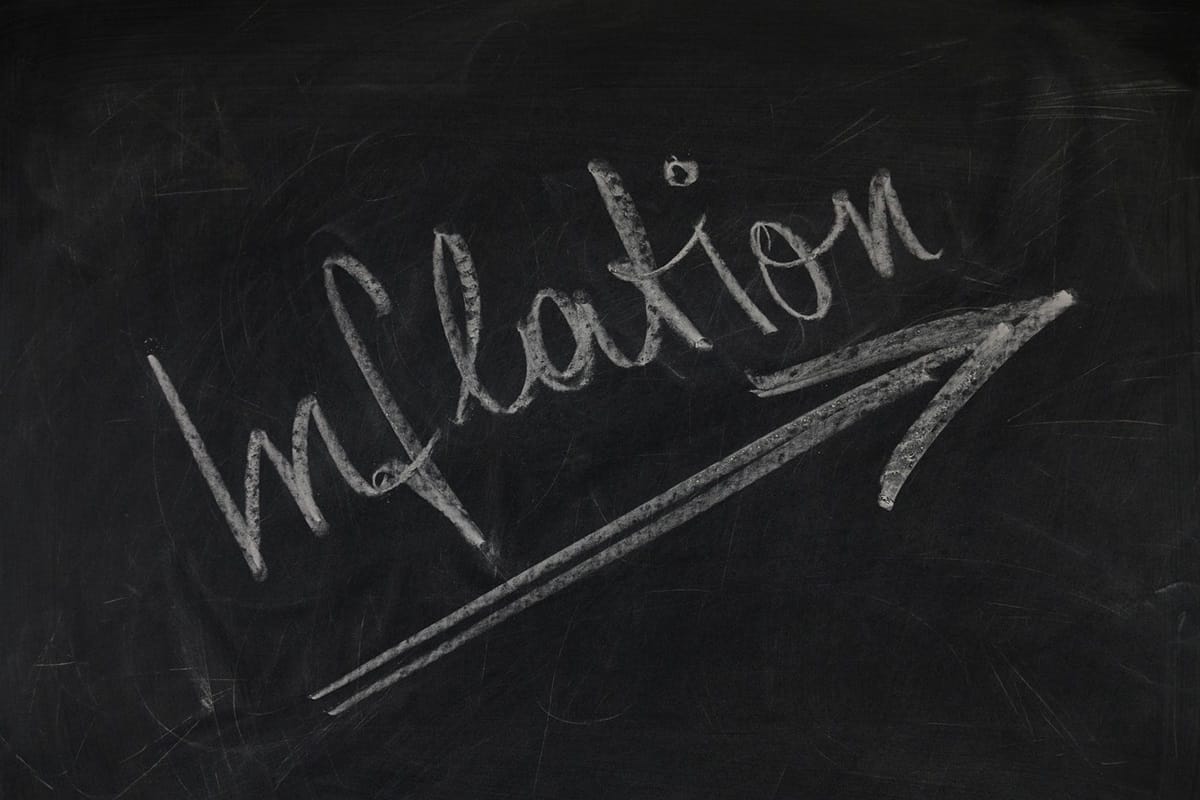Experts predict that the monthly report on consumer prices in the United States will show a decrease in the level of inflationary pressure in this country as a result of April.

It is worth noting that in January-March of the current year in the US, the mentioned category data consistently turned out to be worse than preliminary expectations. Against the background of the corresponding dynamic, forecasts and the general vision of the prospects for the subsequent vector of the United States economic system have deteriorated to a certain extent.
Data on consumer price indicators in the US in April will be released this week by the Bureau of Labor Statistics. Experts interviewed by the media predict that the main gauge of prices, which does not include the cost of food and energy, will increase by 0.3%. Also, in their opinion, the broader consumer price index will also be on an upward trajectory. Experts predict that in this case, the growth will be 0.4%. They claim that one of the reasons for the corresponding dynamic will be an increase in the cost of gas.
If the mentioned forecasts are confirmed by official data, there will be a reason to claim that investors and Federal Reserve officials have received reason to be optimistic about the prospects of the near future. Experts’ expectations, materialized in the space of reality, can be symbolically characterized as, in a sense, an improvement in the economic weather after the growth of the so-called core gauge by 0.4% was observed in January, February, and March. In the context of the results of the first three months of the current year, there formed very persistent concerns that it might take longer than initially expected for inflation to return to the Fed’s 2% target.
Stephen Stanley, chief economist at Santander US Capital Markets, says that the central bank of the United States has actually stopped considering the likely lowering of borrowing costs until data on the growth rate of the price of goods and services returns to a trajectory of stable improvement. The expert made a corresponding statement in a note published last Tuesday, May 14. Stephen Stanley also noted that the April consumer price index in the United States is a small step in the right direction. In this case, the vector of the dynamic of the economy toward the Fed’s inflation target is meant.
In the United States, rent has traditionally been one of the most important components of the consumer price index. The current inflation rate in the US is high largely due to this factor of impact. Leading indicators indicated that rent growth in the United States would be moderate, but in the current year, the economic reality turned out to be somewhat different, as a result of which the materialization of preliminary expectations slowed significantly.
Particular attention should be paid to the owners’ equivalent rent, which is 27% of the consumer price index, and the rent of primary residence with a share of 8% in the structure of the mentioned indicator. As usual, these two tracks are closely related to each other, but a divergence between them in the current year provoked questions about the prospects of the future.
Andrew Schneider, senior economist at BNP Paribas for the United States, said in a May 14 note that he and his colleagues expect the next phase of rent down up in the US to be recorded in the current quarter. This point of view is based on changes in market rents, home prices, and the BLS’s repeat and new tenant rent indexes. Andrew Schneider and his colleagues expect that the combined rent and owners’ equivalent rent inflation for April will slightly exceed the 0.40% mark. In this context, the expert separately noted that the biggest source of upside risks is associated with an increase in the cost of goods and services, which will become a particularly sensitive factor if the anticipated downturn in this quarter comes later than April.
Food away from home was excluded from the core consumer price index. At the same time, the corresponding figure continues to be an important component of the core inflation indicator, which the Fed is paying preferred attention to. Food away from home will be included in the monthly personal consumption expenditure report, which will be published on May 31.
Over the past year, the United States has seen a rapid decline in restaurant inflation. To a large extent, this dynamic is due to factors such as receding food inflation and rising wages. In February and March of the current year, the Food away from home category recorded the slowest back-to-back growth since the beginning of 2021. The April result could be even worse. The corresponding probability became realistic after it became known about California’s intention to raise the minimum wage.
Economic experts Anna Wong and Estelle Ou noted in a report dated May 14 that even with a slowdown in the growth of the core consumer price index as a result of April, the base deflator of personal consumption expenditures, which is the preferred inflation indicator for the Fed, may come in above the CPI. They also noted that the increase in menu prices after a 20% rise in the minimum wage in fast food in California is likely to be a factor in the growth of the mentioned deflator over the last month by 5 basis points. An important fact is that the mentioned price increase was not taken into account in the core consumer price index.
In the consumer price index structure, airline fares and auto insurance are also important components. Data on the producer price index released on May 14 showed that airline passenger services costs decreased by 3.8% last month in the United States. It is worth noting that this indicator is calculated differently and does not take into account such economic information as the consumer price of airline fares prices, which is associated with the general CPI. At the same time, there is still a widespread opinion among analysts interviewed by the media that the probability of a significant increase in the component of the consumer price index is minimal. It is also worth noting that the core personal consumption expenditures gauge, which is preferred by the Fed, takes into account data on the cost of airfares not from the mentioned index, but from the producer price index. This circumstance will have a significant impact on how investors perceive the statistical information that is published in the current week. In this case, it means data on the dynamic of consumer prices in the United States for April.
Motor vehicle insurance is also of particular importance in the context of economic statistics. The corresponding component has recently become a significant impact factor on the consumer price index but does not have a similar status within the personal consumption expenditures indicator. In March, motor vehicle insurance in the United States increased by 2.6%. This growth was the third largest in the entire history of observations since 1985. Moreover, the dynamic of motor vehicle insurance has changed the narrative around the trajectory of inflation in the US service sector. It is extremely difficult to predict changes in the dynamic of this indicator every month. Analysts interviewed by the media do not have unambiguous confidence about what to expect from the data on motor vehicle insurance for April.
The core consumer price index rose by a full percentage point compared to the core personal consumption expenditures index in the 12 months through March. A moderate increase in inflation in the auto insurance sector will be the main factor helping to narrow the mentioned gap in the future.
The rise in the cost of goods and services in the United States, the pace of which exceeded preliminary expectations, has led to speculation that Fed Chairman Jerome Powell may be concerned that the fight against inflation will turn out to be a longer and more difficult process compared to the initial opinion about what the corresponding efforts will be. At the same time, he does not demonstrate any anxiety or a kind of nervousness in the context of his attitude to the current economic situation and the prospects for its subsequent change. Commenting on the data released on May 14 on wholesale inflation in the US, which reached its highest level since the beginning of 2024 in April and clearly did not become a source for at least minimal or shaky positivity, Mr. Powell said that the present state of affairs is sort of mixed, not hot. He also does not attach much importance to the consumer price index for last month, which will be released this week.
At the same time, Jerome Powell recognizes the unequivocal and absolutely objective fact that in the first quarter of the current year, the United States failed to make progress in the fight against inflation. He made the corresponding statement at an event hosted by the Foreign Bankers’ Association speaking alongside European Central Bank Governing Council member Klaas Knot.
Jerome Powell said there were no expectations that the fight against inflation would be easy, but noted that the growth in the cost of goods and services significantly exceeded preliminary forecasts. He predicts that over time, the corresponding indicator will return to the levels that were observed last year. At the same time, Mr. Powell said that his confidence in the implementation of positive tendencies is no longer as significant as before the moment when disappointing inflation data were recorded in the first months of 2024.
Most Fed officials agree with the mentioned point of view, which does not provide for sustained optimism about the dynamic of the economic situation. They admit the possibility that inflation may turn out to be more stable than initial expectations regarding the pace of movement of the corresponding process towards a positive result. The likely implementation of the corresponding scenario will significantly complicate the achievement of the Fed’s inflation target of 2%.
Jerome Powell also notes that in the United States, some employers face problems filling open positions. According to him, this negative circumstance contributes to inflation and is a factor of upward pressure on wages.
Also in the United States, some officials have expressed concerns about the intensification of the growth rate of the cost of goods and services. In their opinion, when continuing to implement this scenario, there may be a need to raise interest rates.
Michelle Bowman, the Fed Governor, has announced his willingness to increase the federal funds rate.
For financial officials in the United States, it is a kind of alarm signal that there is expanding confidence among consumers that inflation will strengthen in the coming year. The corresponding sentiments were recorded according to the results of special surveys.
Inflation expectations can effectively control the pace of hikes in prices. Businesses take into account corresponding expectations when making decisions about changes in the cost of goods and services. In the context of the current consumer sentiment, there is a high probability of price increases.
As we have reported earlier, Jerome Powell Says Fed Needs More Confidence on Inflation to Cut Rates.









